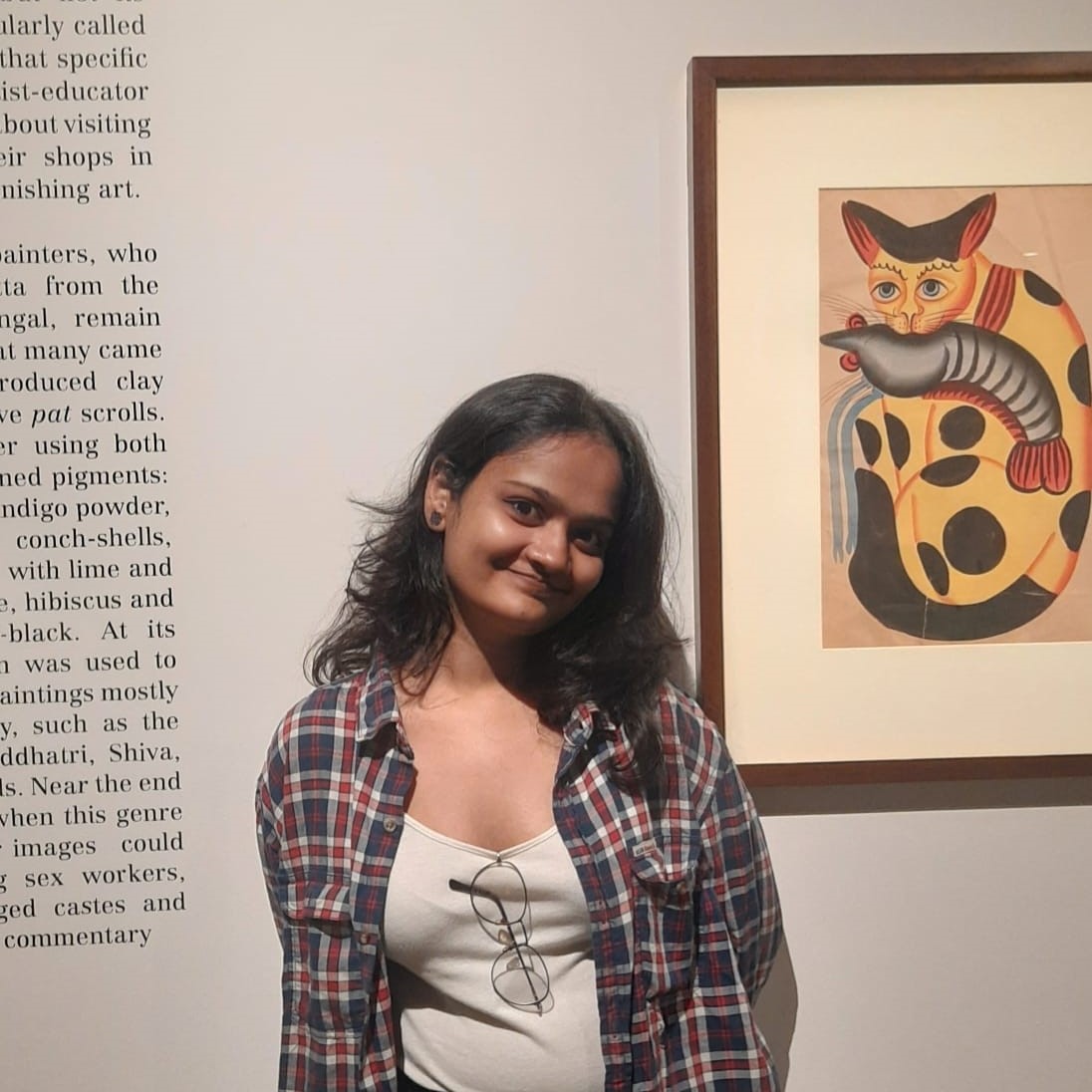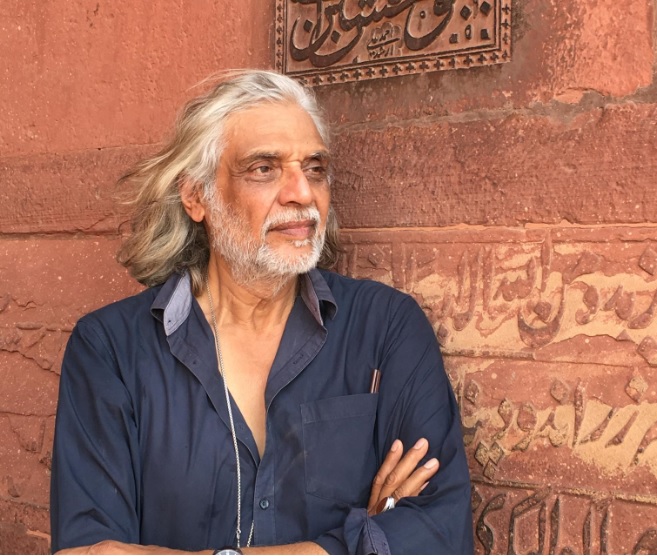Welcome to Samvaad, where art meets conversation, and inspiration knows no bounds. Here we engage in insightful conversations with eminent personalities from the art fraternity. Through Samvaad, Abir Pothi aims to create a platform for thought-provoking discussions, providing readers with an exclusive glimpse into the creative processes, inspirations, and experiences of these creative individuals. From curating groundbreaking exhibitions to pushing the boundaries of artistic expression, our interviews shed light on the diverse perspectives and contributions of these art luminaries. Samvaad is your ticket to connect with the visionaries who breathe life into the art world, offering unique insights and behind-the-scenes glimpses into their fascinating journeys.
This is Part 6 of the Samvaad is between Nidheesh Tyagi from Abir and Jaya Jaitly who is best known for her contributions to the promotion and preservation of Indian handicrafts and textiles. Jaitly has played a significant role in the development of the Indian handicraft sector and has been an advocate for the rights and welfare of artisans. She has been actively involved in various organisations working towards the empowerment of artisans and the promotion of traditional crafts. Jaya Jaitly has also written extensively on Indian crafts, culture, and social issues.
Nidheesh: Last question now- What are the projects are you currently engaged with or are conceiving right now? What should we expect?
Jaya: I think that’s a leading question from you. (chuckles) considering we got together on the gamcha idea, I have always had a special place in my heart for the gamcha because I feel that it’s the most basic handloom garment for the most poor simple worker of India. Whether it’s the vegetable sellers, the drivers, rickshaw-waala and when I went to Phuliya, and I saw the women making gamchas, and their looms are quite wide and I said, they are only earning I think 60 rupees a day from that and when we converted those wide looms into saree weaving, they were earning 3 times as much. And I also feel that the gamchas are so beautiful and then you start looking around all over the country; the Odisha gamchas are lovely, in the south in Karnataka there is a certain gamcha which the men wrap around their shoulder like a shawl, in certain festival. And I felt that’s something we have to preserve. Even in places, in the towns of Western U.P. all the pavements are filled with Chinese towels and all the gamchas will get replaced by this. And I thought that the handloom weaver especially the women weavers, and why cannot it be a fashion garnet. So you might make it a fashion garment, make the rickshaw-waala feel good about wearing it, not just “paseena pocho, gundh saaf karo”(wipe sweat and clean stuff)
Nidheesh: Nai uske liye bhi theek hai, uske liye bhi acchi baat hai(it is good for even that) but in the sense that it also- the best part that India climate and geography from Assam to Gujarat till Kachchh you will find a different local fabric yeah.
Jaya: And the gamcha of Gamosa in Assam every woman weaves it in her home. It’s a greeting rather than a garland and I just feel that it has a lovely tradition, so it has culture, tradition and the woman of the household also weaving it it has a ceremonial, fashion and basic utility purpose. So why allow people to forget this and so-
Nidheesh: and compare it to the woollen stoles and mufflers, the way, globally we see cotton, and cashmere, to my mind India will have more use and value of a gamcha than compared to a woollen stole right?
Jaya: Absolutely, so I just thought I must get into a project of collecting gamchas from all over the country and planning a beautiful exhibition. Also working on, say new designs or uplifting the gamcha for another section of society because if the upperclass uses it then the auto rikshaw waala feels good. Then he will not feel that it’s something he has to sit on and hide. So its a question of both ways, the elitist thinks that yes this is also there and I’m nothing wrong if I look like an autorickshaw-waala, and the autorickshaw-waala says “Oh paise waale pehen rahe hain toh humare liye bhi accha hai.” (oh if the rich man is wearing it, its good for us as well) so maybe some cross fertilisation will happen of ideas.
But that plus also getting wherever possible, sarees woven like I did with Phuliya to go alongside the gamcha. So you have a value-added additional product by the same weaver as well as the gamcha. So this is something that I’m now working on the proposal to get the funds and then to work on it. So I hope you will help.
Nidheesh: Absolutely. I’m very happy to be a part of this. I keep telling my friends that I’m the unofficial global brand ambassador. Wherever I go, gamcha is something I will always pick up. All my friends say that if Nidheesh has to be gifted something, this is the cheapest thing. It’s not costly to get a gamcha. This is a gift to people who are in India and abroad. I am very happy to be a part of it. I also saw at least 2 people wearing designer clothes made out of gamchas.
Jaya: yes yes. When I developed those sarees in Phuliya, we had a pop-up sale in Bangalore, and 100 sarees sold in 2 days. The women there, the next day were cutting it up, making aprons, oven gloves, blouses, skirts. So it’s fine. Use it, it’s a fabric that has been woven by a weaver. Also, you know, in Japan they have a certain cloth which is called a “Furoshiki”. Furoshiki is a square piece of cloth, which whenever they want to give the gift a little bit ceremoniously or you got a packet of sweets. You tie the whole packet in a Furoshiki which has always got a lovely print on it. And so maybe that is some other alternative use for a gamcha.
Nidheesh: Yes. It used to be there. I remember in Bastar. Sometimes when you’re not carrying a Jhola to the sabzi market, you will actually tie it in gamcha. I’ve seen people on train in my childhood, they will carry their food, sattu and roti and these things in a gamcha. That was very common.
Jaya: If our exhibition also includes photographs of this sort of usage, it brings the culture of India along with the gamcha.
Nidheesh: Gamcha is an act of civilisation rather than just culture. It’s a great thing.
Jaya: so we’ll plan it and see how it goes.
Nidheesh: yeah I will see. Thank you so much Jaya ji for taking out this time for us. And I think we will come back to you and we will track your work and the gamcha project will be next on our scanner. Thank you so much.
Jaya: Thank you it’s been fun talking to you.

Vaishnavi Srivastava is a learning writer, a keen researcher and a literature enthusiast. She is a Sub-editor at Abir Pothi.






